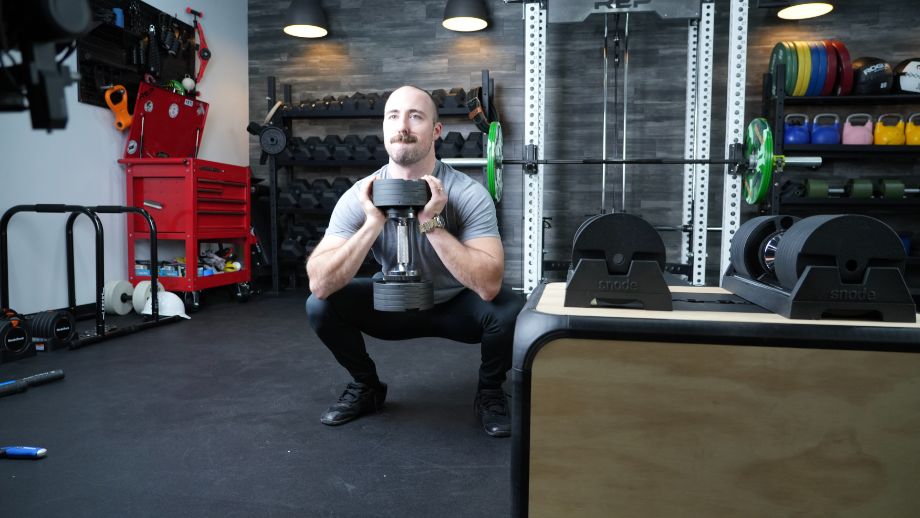We test and review fitness products based on an independent, multi-point methodology. If you use our links to purchase something, we may earn a commission. Read our disclosures.
Squats are one of the most notorious bodyweight exercises for building lower-body strength. Back squats and other squat iterations that incorporate weights can further enhance the benefits of a squat by more intensely stimulating muscle growth. In many cases, this often requires a squat rack, barbell, bumper plates, and other equipment, which isn’t always accessible.
RELATED: Bodyweight Workouts
The goblet squat can offer some of the enhanced benefits of incorporating weights into your squats while being more accessible to beginners, people experiencing shoulder or back pain, and the circumstances of your workout space. In addition, requiring only a dumbbell, kettlebell, or resistance band makes them possible from the comfort of your home, in a park, or without a giant squat rack setup.
Furthermore, goblet squats offer lower- and upper-body benefits, making them a great way to get more out of your squats and workout routine in less time. In this article, I want to explain how to correctly do a goblet squat while also sharing some of the excellent benefits of this simple and accessible exercise and why it should become a part of your leg day.
How To Goblet Squat
- Exercise name: Goblet squat
- Exercise type: Compound
- Targeted muscles: Quadriceps, glutes, hamstrings
- Secondary muscles: Abdominals, adductors, spinal erectors
- Equipment needed: Dumbbell or kettlebell
- Difficulty level: Beginner to advanced
- Stand with your feet roughly hip-width apart and your toes facing forward while maintaining an upright spine and engaged core.
- Grab your kettlebell (or dumbbell) and grasp it firmly with both hands in front of your chest, with the weight’s top point parallel to your chin.
- Once positioned, hinge your hips back slightly and lower yourself as if you’re about to sit in a chair. Make sure you maintain a safe grip on the weight while also doing your best to keep your back straight and chest upright.
- Lower to your desired depth.
- Once lowered, push upward through your heels to return to your starting position.
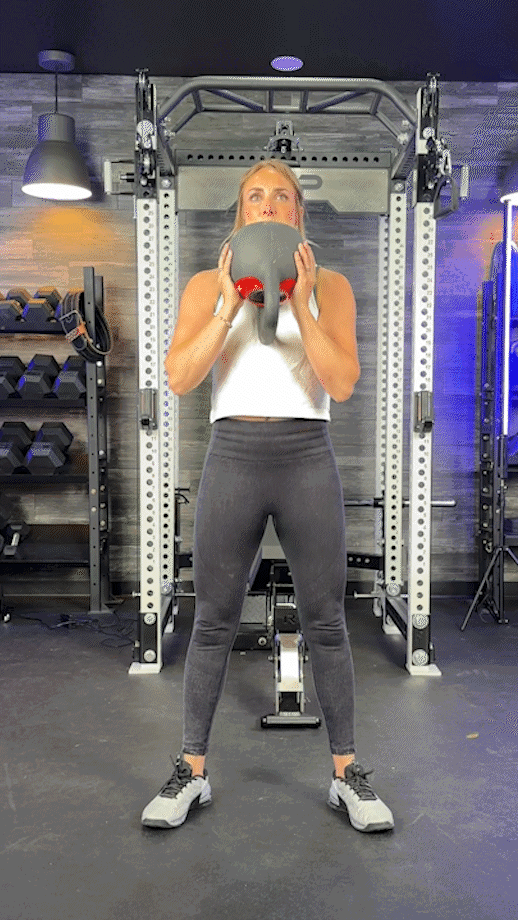
Expert tip: As you come down, pause when your knees are slightly flared out to feel that burn, then push back up immediately. Try to inhale as you come down, and exhale as you come up, maintaining a fluid movement and breathing rhythm.
RELATED: Best Kettlebells
Goblet Squat: Muscles Worked
The goblet squat could be considered a full-body exercise as this movement not only targets your leg muscles (e.g. quads, calves, and glutes) but also works your core and arms due to the weight being held in front of your body.
Goblet Squat Modifications
Modifying the goblet squat doesn’t take much. Whether you’re widening your stance or changing the tempo, here are simple tweaks to alter the exercise.
Vary Your Stance
Adjusting your stance can change the focus of the exercise. A wider stance (sumo) targets the inner thighs and adductors more, while a narrower stance emphasizes your quadriceps, particularly the vastus medialis—aka the teardrop muscle.
Alter The Tempo
Modifying the tempo of your squats can increase the intensity and overall difficulty. Slowing down the lowering (eccentric) phase or pausing at the bottom can enhance muscle engagement and strength gains.
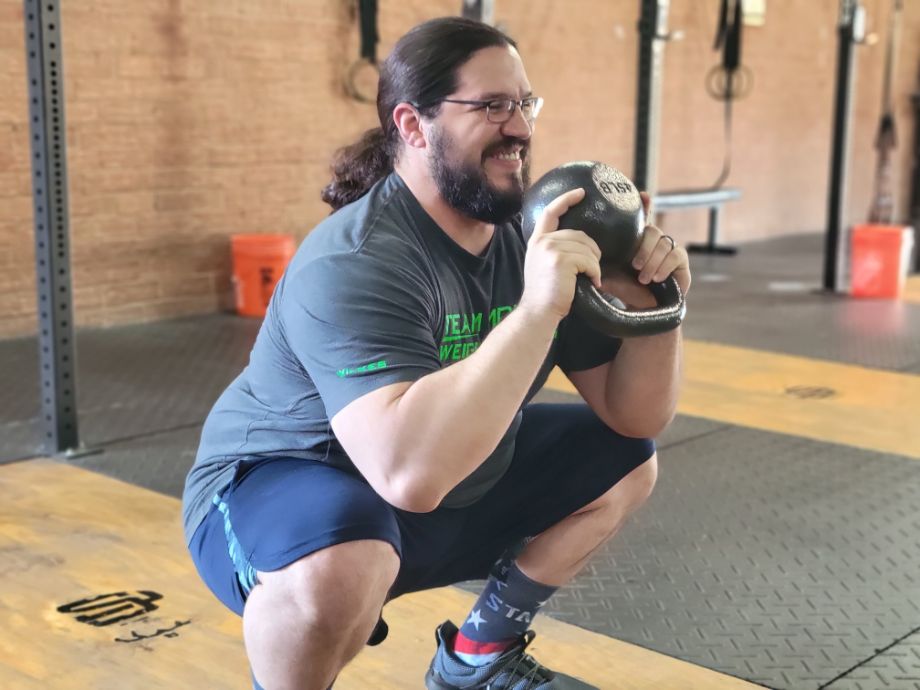
RELATED: How And Why To Do Tempo Training
Use Different Types of Weights
You can perform goblet squats with various weights, such as dumbbells, kettlebells, or even a medicine ball. This allows you to adapt the exercise based on the equipment available and your strength level.
Elevate Your Heels
Performing goblet squats with your heels elevated (using small plates or a wedge) can improve your depth and more intensely target your quadriceps. This modification is particularly useful for those with limited ankle mobility.
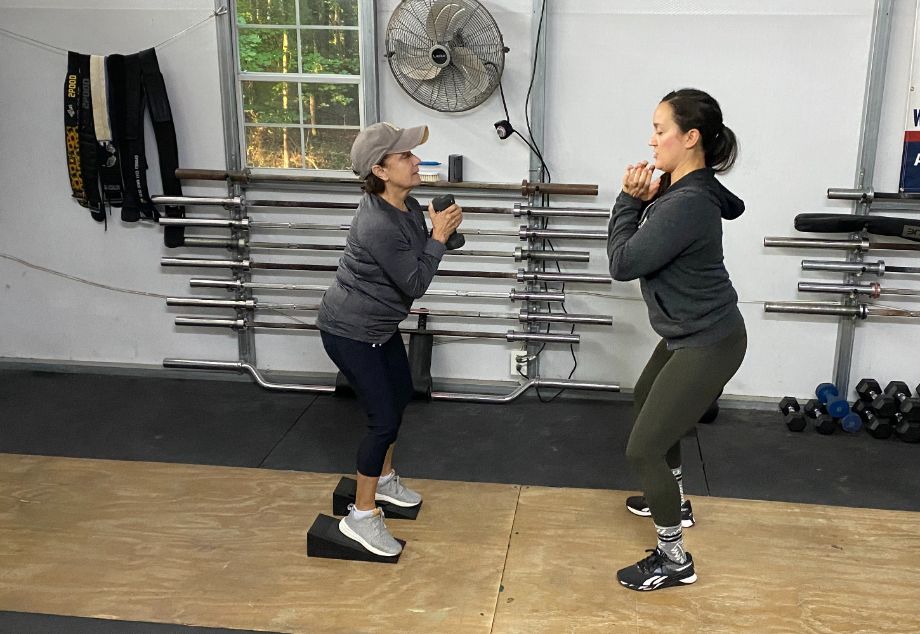
RELATED: Heel-Elevated Goblet Squat
Goblet Squats Vs Other Squat Variations
With their front-loaded weight and emphasis on posture and core engagement, goblet squats are beginner-friendly and versatile. They differ from other variations like the back squat, which requires more advanced technique and balance, and the pistol squat, which demands significant strength and stability.
Here’s an overview of other squat variations and how they differ from the goblet squat.
Traditional Squat
Also known as the back squat, this variation requires placing a barbell across your upper back. A staple in weightlifting and powerlifting, the back squat primarily targets the quadriceps, glutes, and hamstrings.
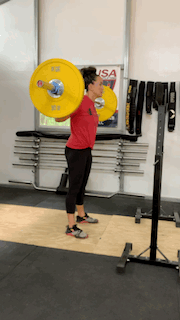
Front Squat
In a front squat, the barbell is placed across the front of the shoulders, engaging the quadriceps, glutes, and core more than the back squat. If you’re performing the front squat with dumbbells, you’ll want to hold a dumbbell in each hand with your fists parallel to your temples. It requires good wrist and shoulder mobility, making it suitable for intermediate to advanced lifters.
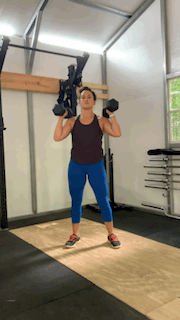
Box Squat
The box squat involves squatting down to a box or weight bench, which helps ensure consistent depth and can aid in learning proper squat mechanics. It primarily targets the quadriceps, glutes, and hamstrings. Suitable for all experience levels, it requires minimal equipment—a box and a barbell or dumbbell.
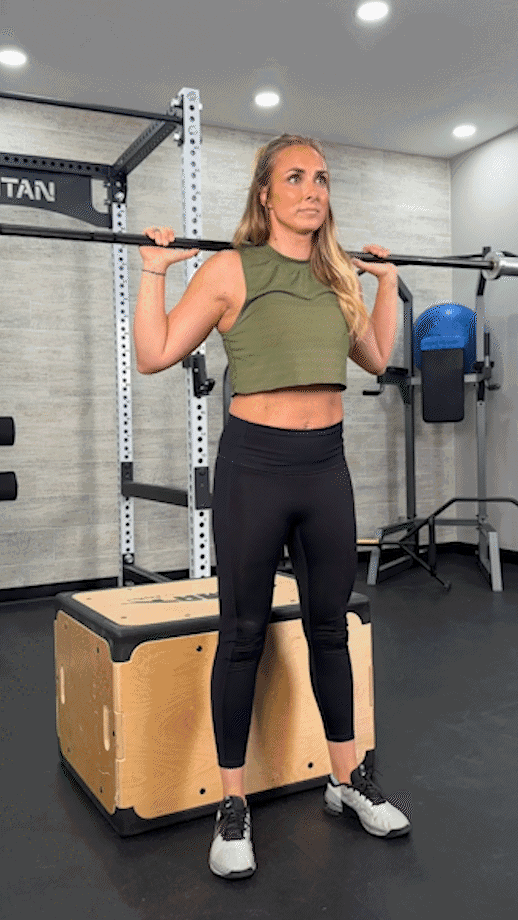
Sumo Squat
The sumo squat uses a wider stance with your toes pointed out, emphasizing the inner thighs (adductors) and glutes. It’s similar to the goblet squat regarding weight placement but differs in stance and muscle focus.
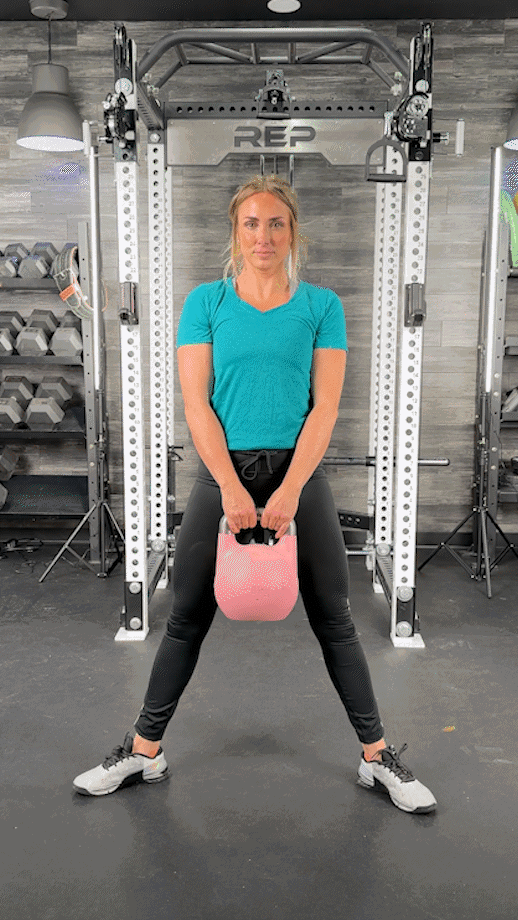
Pistol Squat
A challenging single-leg squat that targets the quadriceps, glutes, hamstrings, and core, the pistol squat requires significant balance, strength, and flexibility, making it more suitable for advanced exercisers. Although you don’t need any equipment, you can use a chair or wall for support.
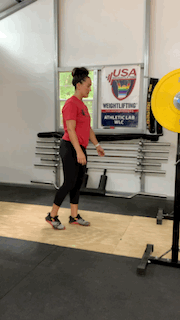
Overhead Squat
With this variation, you must hold a barbell overhead, which requires excellent coordination. The overhead squat targets the entire body, including the shoulders, back, core, and legs. This exercise best suits experienced lifters with good mobility and balance.
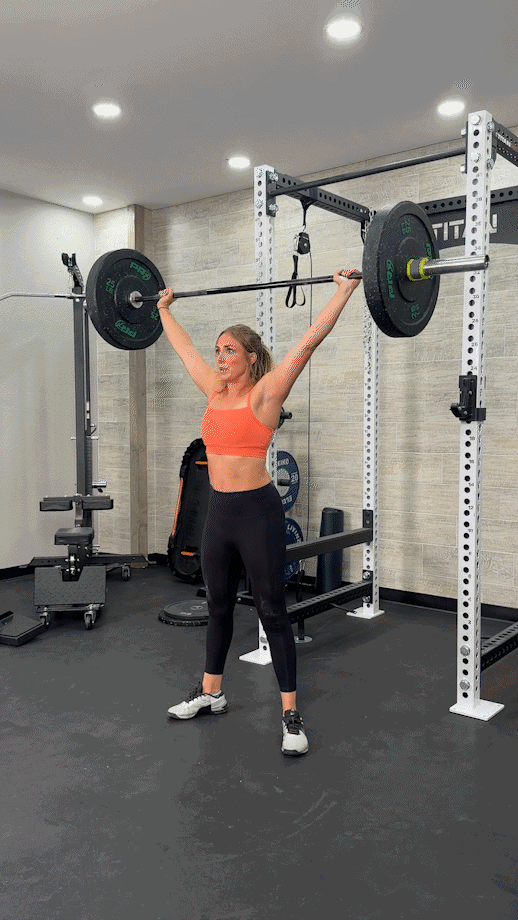
Jump Squat
A plyometric exercise that combines a squat with a jump, the jump squat targets the quadriceps, glutes, and calves while improving explosive power. Suitable for intermediate to advanced levels, it requires no equipment but can be intensified with a weighted vest or dumbbells.
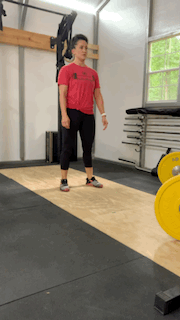
Goblet Squat Alternatives to Try
Once you’ve mastered the goblet squat and its variations, here a few alternative exercises you can try.
Barbell Front Squats
Why do it: If you’re looking to switch it up and experiment with barbells, but are still wary of the back squat, you can replace the kettlebell or dumbbell in front of your body with a barbell. This is done by resting the barbell on your upper chest and holding it with your palms up and elbows pointing forward.
How to do it:
- Load a barbell to the desired weight, then grab the barbell with an overhand grip and unrack it into the front rack position. This means the bar will be resting across your shoulders and upper chest with your elbows lifted.
- Hinge forward by bringing your hips back, then bend your knees as you lower into a squat. Keep your chest tall and your elbows pointed forward as you descend.
- Push your heels into the floor to return to a standing position.
- Repeat for reps.
RELATED: Best Olympic Barbell
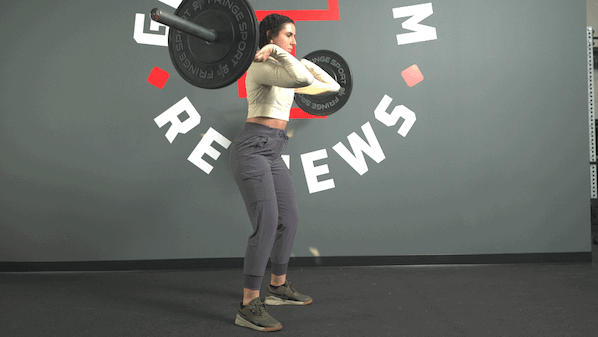
Elevated-Heel Goblet Squat
Why do it: Elevating your heels helps to activate your quads for more focus on building this important muscle. It’s also a compound exercise that can target your glutes an core.
How to do it:
- Place two weight plates (or a slant board) on the floor and stand with your legs hip-width apart and your heels resting on top. Make sure your toes are facing forward, your back is straight, your chest tall, and your core braced.
- Hold a kettlebell or dumbbell in front of your chest.
- Lower your body with control by hinging at your hips and bending your knees. Keep your weight on your heels for the full range of motion.
- Keep going until your thighs are parallel to the floor, then pause and push back into a standing position by driving from your heels.
- Repeat for reps.
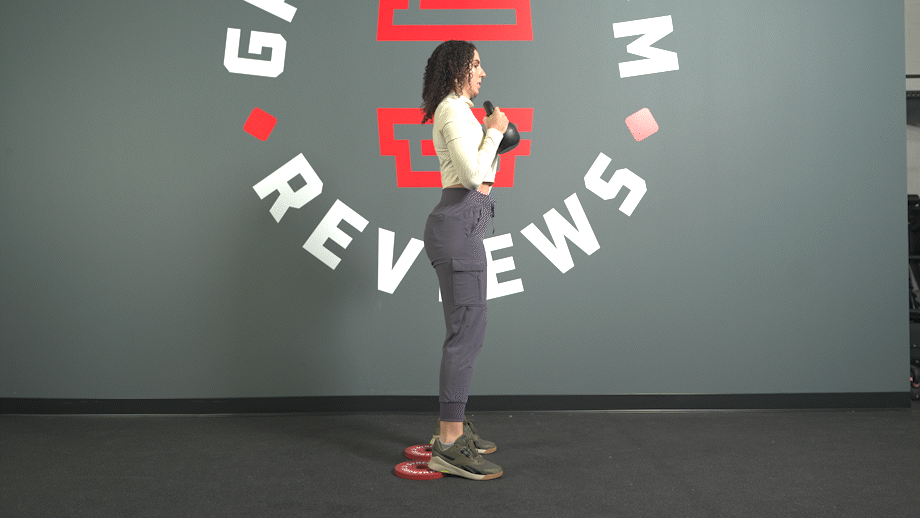
How Many Reps Should You Do?
If you want to increase the fat-burning or cardio experience a goblet squat offers, increase your repetitions and speed. This should also determine the weight you are using. This is up to your discretion or understanding of your ability, but generally, if you’re looking to focus on strength, seek higher weight with fewer reps. Or, for cardio, use a lower weight or weight where you can still safely engage in higher reps and safe speed.
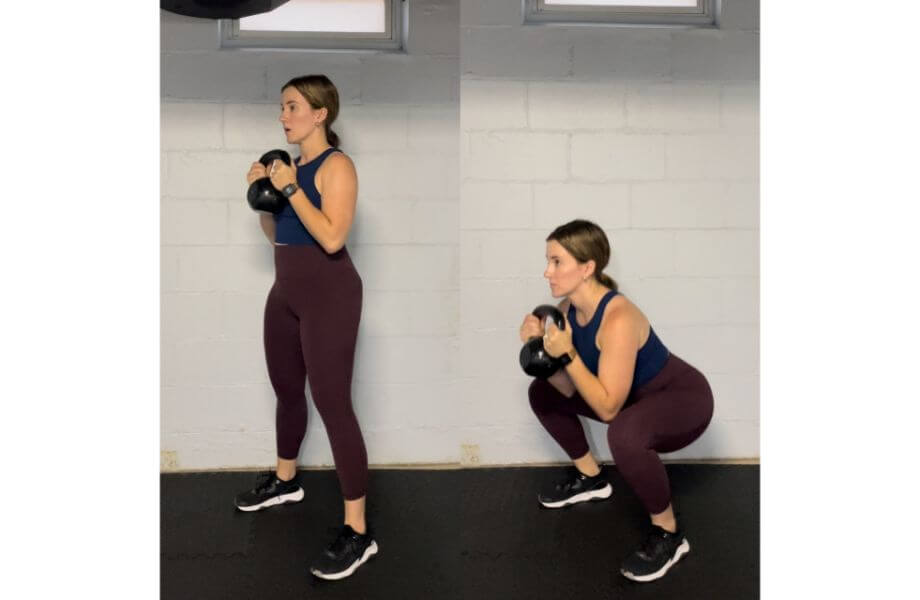
In both cases, ensure you do not compromise your technique by using more weight than you can handle or focusing more on speed than form.
Benefits of Goblet Squats
From enhancing your core strength to improving your posture, there are many benefits to including goblet squats in your strength training program. Let’s look at some of the key advantages of this beginner-friendly exercise.
Can Help Improve Your Posture
Due to the placement of the weight in front of the body, goblet squats help maintain an upright torso. This encourages better posture and spinal alignment, making it easier for beginners to learn the proper squat form.
Can Enhance Your Core Strength
Holding the weight close to your chest requires significant core engagement. This helps strengthen your abdominal muscles and improves overall stability, which is beneficial for various physical activities and other exercises.
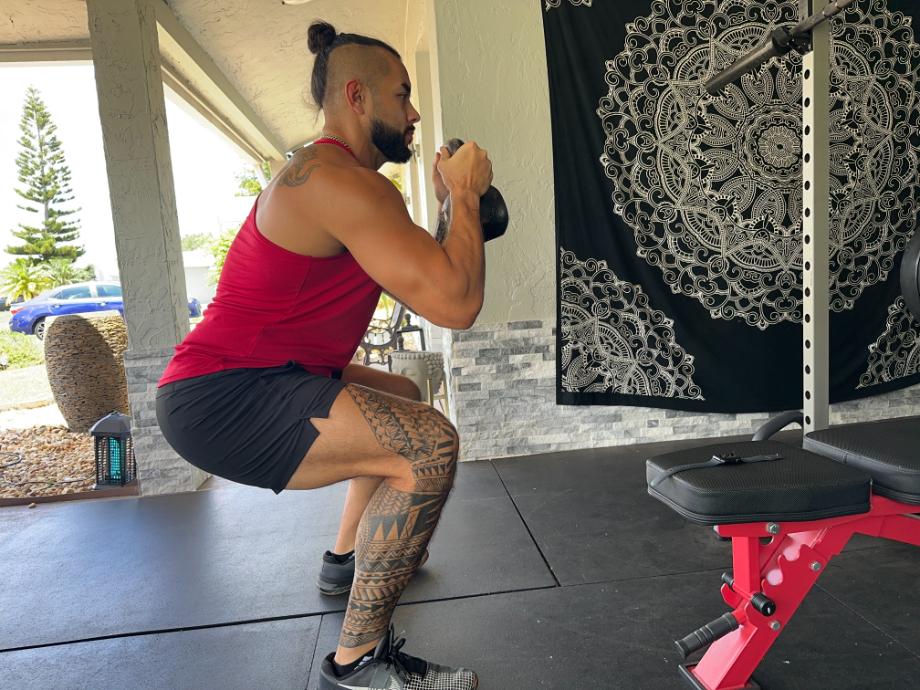
RELATED: Beginner Core Workout
Adaptable to Different Fitness Levels and Equipment
Goblet squats are highly versatile and can be performed with various weights, such as kettlebells or dumbbells. This makes them accessible for people at different fitness levels and easy to adapt based on available equipment.
Increases Quadriceps Activation
The goblet squat emphasizes the quadriceps more than some other squat variations. According to a 2021 study1 comparing the goblet squat to the landmine squat, the former can better target quadriceps activity and increase vertical loading. This makes it an excellent exercise for building and toning the muscles at the front of your thighs.
RELATED: The 9 Best Quad Exercises
Less Strain On Your Lower Back
Because you must hold the weight in front of your body, goblet squats put less strain on your lower back than barbell squats. This makes them a safer option for individuals with lower back issues.
Common Goblet Squat Mistakes
As you’re learning this fantastic lower-body exercise, it’s important to avoid these common mistakes to ensure your goblet squat safety:
Hinging Instead of Squatting
To get the benefits of the goblet squat, maintain a straightened back and a chest that faces forward. Leaning forward or losing technique can lead to injuries and deter the benefits of the goblet squat. This is why it’s important to ensure you are using a weight that can challenge you but does not prevent you from engaging in the correct technique or a full squat.
RELATED: Hip Hinge Exercises
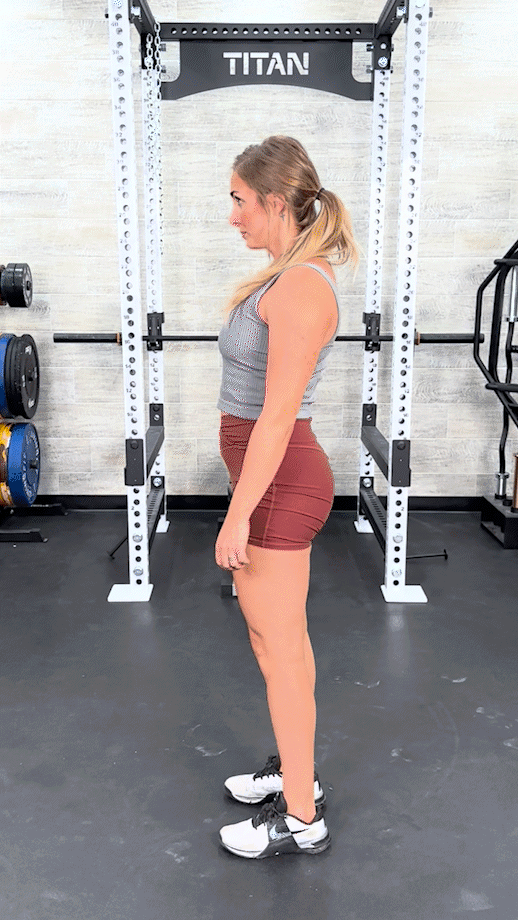
Squatting Too Shallow
You want to really enter that imaginary chair when engaging in this exercise. Always try to squat down as low as possible to maximize the benefits and feel that burn, especially in your lower body. Despite some myths that tell otherwise, your knees passing your toes is not an issue. Quite the contrary, the further you go into a full range of motion, the better the burn.
Always aim for a squat where someone could slip a high-school desk chair underneath you. This thought can really help!
Moving Too Quickly Too Soon
If you have ever watched someone doing push-ups super fast, they will often go halfway down or just start to look like they are bobbing their head up and down. Faster goblet squats at higher reps can increase the cardio and metabolism-boosting benefits of the goblet squat, but like any exercise, technique always comes first!
Safety Tips and Precautions
When performing goblet squats, it’s crucial to maintain proper form to avoid injury and maximize effectiveness. Ensure your knees track over your toes to prevent undue stress on the knee joints. Keep your torso upright by engaging your core and maintaining a straight back throughout the movement. Start with a manageable weight to focus on technique before progressing to heavier loads. It’s also important to keep your heels grounded and push through them as you rise to engage your glutes and hamstrings effectively.
Additionally, be mindful of your breathing pattern—inhale as you lower into the squat and exhale as you push back up. This helps maintain core stability and control. If you experience discomfort or pain, reassess your form and seek advice from a certified personal trainer or fitness professional.
Useful Goblet Squat Equipment Accessories
While there is minimal equipment required for a goblet squat, there are a few items that you might find useful:
Kettlebells/Dumbbells
Kettlebells are arguably the best free weight for goblet squats as they offer a remarkably safe grip to hold the weight and help you to increase the activation of your back muscles while training. A pair of the best dumbbells also are useful and work well with the squat. However, they require a different grip and may not activate your back to the same degree as kettlebells.
Resistance Bands
Resistance bands, plus a clench band handle, can also be used to perform a goblet squat. By standing with your feet shoulder-width apart on top of a band and grasping it with a clench band handle, you can easily perform a goblet squat as you would using a kettlebell or dumbbell.
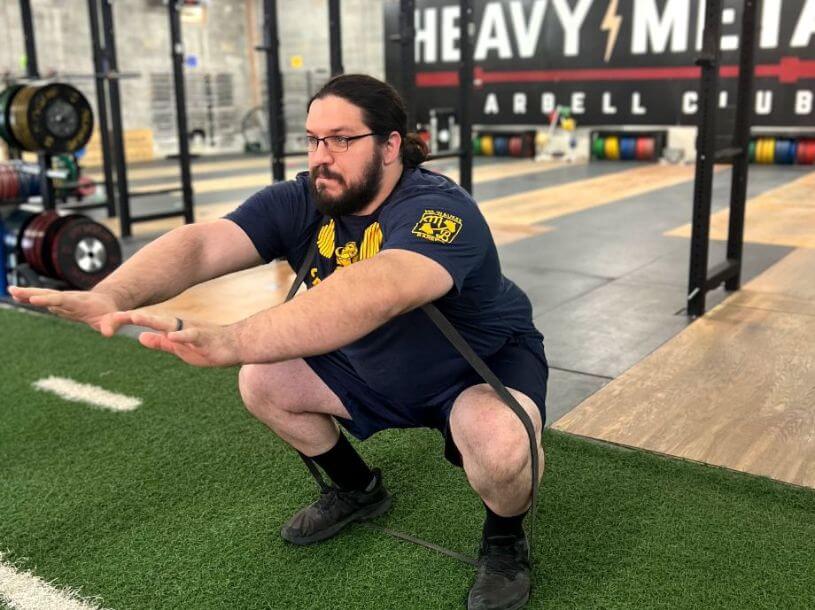
RELATED: Best Resistance Bands
Furthermore, resistance bands offer a practical alternative to heavier free weights, allowing you to take them with you on the go. Also notable, resistance bands can offer many of the same benefits of using free weights in your training, but at a drastically reduced cost.
How to Add Goblet Squats to Your Routine
Goblet squats can occupy a prime real estate in any leg day routine. Especially if you’re having difficulty with the range of motion of traditional back squats or want to shake up your quad-focused movements. Here are a few programming suggestions incorporating the goblet squat into your lower-body workout:
- Beginners: If you’re new to the goblet squat exercise, starting with either your bodyweight or a lighter 5 to 10 pound kettlebell (or dumbbell) while you dial in your form. Aim for 2-3 sets of 10-15 reps.
- Advanced lifters: If you know the goblet squat like the back of your hand, experiment with heavier weights for less reps (aim for 3-5), tempos, or adjusting your working muscles by performing a goblet squat with your feet elevated.
Goblet Squat: FAQs
What muscles do goblet squats target the most?
Goblet squats primarily target the quadriceps. However, they also significantly engage the glutes, core, hamstrings, adductors, and lower back muscles.
Are goblet squats effective?
Goblet squats are an absolutely effective and great exercise! However, the degree of effectiveness achieved in a goblet squat depends on you maintaining a quality technique and form. Weights, reps, and speed can all deliver varied results, but technique and form should always be the priority to maximize results and avoid injuries.
Furthermore, goblet squats can deliver both upper and lower body benefits while still offering a varied strength or cardio experience. For example, by increasing weight and lowering reps, you can focus more on strength, or by increasing reps and speed, you can escalate the cardio demands of the squat.
Traditional bodyweight squats are generally known as a classic low-impact beloved exercise due to their accessibility and results. The goblet squat enhances the benefits of the traditional squat by delivering more versatile results for your upper and lower body and your strength and cardio experience.
What is the difference between a goblet squat and a regular squat?
A goblet squat involves holding a weight (like a kettlebell or dumbbell) close to your chest, promoting an upright posture and ease of balance. On the other hand, a regular squat typically involves placing a barbell across your upper back, requiring more advanced technique and core stability.
Is a goblet squat suitable for beginners?
Yes, a goblet squat is highly suitable for beginners. Positioning the weight in front of your body helps you maintain an upright posture, which reduces the risk of injury and makes it easier to perform the movement correctly.
References
- Collins KS, Klawitter LA, Waldera RW, Mahoney SJ, Christensen BK. Differences in Muscle Activity and Kinetics Between the Goblet Squat and Landmine Squat in Men and Women. J Strength Cond Res. 2021 Oct 1;35(10):2661-2668. doi: 10.1519/JSC.0000000000004094. PMID: 34341315.
Further reading

Our experts cover potential sauna suit benefits and risks so you’re not left in the dark on this fitness fad. Read more

In our Nautilus T614 Treadmill Review, we take a look at the specs of this now-discontinued treadmill. Read more

This emerging field in the world of biohacking and recovery isn’t well understood yet. What is red light therapy? We take a deep dive in this article. Read more

Looking for a convenient mat for yoga at home or in a class? Here are our top picks for the best yoga mat that can suit your individual needs. Read more

